In 2018, I explored various meditation techniques and decided to enrol in the Transcendental Meditation (TM) course after being inspired by Ray Dalio's book Principles. That marked the beginning of my meditation journey.
Since then, I have dedicated 10 to 14 days each year to attending meditation retreats in addition to my daily practice. One of the most impactful experiences was participating in the Vipassana Meditation course.
I adhered to strict guidelines: no mobile phones, no talking, no reading or writing, no listening to music or watching shows, no physical contact with others, and abstaining from meat and drinks. Additionally, I woke up at 4 am every morning and meditated for 12 hours for 10 days. This was the routine I followed during my stay at the Vipassana Centre last year.
This year, I feel fortunate to have had the opportunity to serve at a centre in England in August, further enriching my experience with this ancient practice. Below is my reflection on this course.
Overview of the Course
When I heard about the Vipassana Meditation course from a friend and read the rules above, my first impression was, WTF... who would like to go to this meditation prison? Especially for someone like me who heavily depends on digital devices for work. However, out of curiosity, I decided to give it a go. So I enrolled in a course at one of the Vipassana Centres in England, along with more than 20 new students, to learn this thousand-year-old Buddhist meditation technique.
Vipassana is a Pali word that means seeing things as they really are. This ancient Indian meditation method was rediscovered and developed by Siddhattha Gotama over 2,500 years ago as a technique to help human beings out of suffering. Vipassana Meditation aims to rebuild the mind-body connection, eliminate distractions from the mind, and cultivate a balanced heart to live with peace, love and compassion.
The course is taught on video by S.N. Goenka, who was born and raised in Burma to a family of merchants and grew up with a luxurious lifestyle just like Buddha Siddhattha. After having everything but feeling unfulfilled and unhappy, Mr Goenka started a fourteen-year training with Sayagyi U Ba Khin and learned the technique of Vipassana from him.
In 1969, Mr Goenka moved to India and began teaching Vipassana in person. In 1982, Mr Goenka appointed assistant teachers to help him meet the growing demand for the crouse. Nowadays, there are over 160 Vipassana Meditation centres across the five continents, with hundreds and thousands of students from different races, religions and backgrounds.
Vipassana courses entirely rely on donations from participants and volunteers. Students must follow a strict code of conduct during the ten days and then apply what they learn in their daily lives afterwards.
DAY 1-3
Upon arrival at the meditation centre, I was assigned to a dormitory with another two girls. After a short break and course induction, we started to live in Nobel Silence (following the rule I mentioned above) with a strict schedule.
Getting up early and having an extended meditation routine is not difficult for me because meditation has already become a part of my life since I started five years ago. I was not perturbed about the strict timetable but rather glad I finally had time to be with myself without any external distractions.
Speaking of the food, breakfast is organic cereal/bread with fruit plates, and there are various nut butter and jams and coffee and tea to choose from. Lunch varies daily: Indian curries, Italian pasta, Middle Eastern dishes, Chinese tofu, and many stir-fries or slow-cooked dishes with rice. There is no supper, but tea breaks where fruit plates are served.
On the first day, I learned the Anapana technique. This breath-focused meditation requires focusing on the triangle area between mouth and nose and devoting yourself to inhalation and exhalation activities only. Since I have been practising Transcendental Meditation for a while, this course was an unlearning process for me to get used to this new meditation technique.
The core message is whenever thoughts emerge in the head, just let them come and go, repeatedly bringing your attention back to the breath. I found the first three days relaxing because I enjoyed this breath-focused meditation. Moreover, I also indulged myself in daydreaming exercises during each break. A little theatre in my head featured me as the main character—what a pleasure with imaginative scripts full of drama and fun.
Just when I thought it would be such a free and easy ten days at Vipassana Centre, the reality hit me hard.
DAY 4-6
Day four was the official starting point of practising Vipassana. Mr Goenka explained that our mind and body are ready to enter the deep level after three days of preparation. We need to scan the whole body from head to toe and not move during the entire one-hour meditation.
Meditating in solid stillness for 20-30 minutes is easy for me, but for one hour, I doubted that. As expected, the first Vipassana session was a mental and physical struggle, and I got tangled up at around the 30-minute mark. Not only did I feel my legs tingle and my back stiffens, but all the cells in my body were howling madly inside and screaming: MOVE!
I kept using my willpower to convince myself not to move. Well, my monkey mind would not listen and kept popping up fearful thoughts one after another: I am going to break my legs if I do not move; ah, my face is so itchy, and I need to scratch it; OMG, I am going to be paralysed for the rest of my life! Every part of my body is hurting so much!
Seconds felt like years, and I finally used up my willpower. I burst out with tears from self-blame and pain and started to stretch my legs. At the same time, I was aware that other students around me began to move, and I could even hear the footsteps leaving the meditation hall. I was in a frustrated stage: how come I was too weak to sit still just for one hour? And I cried even more (silently).
When I researched this course, I heard many students left the meditation centre on the third or fourth day. I thought they were incapacitated, and now I was one of them planning to escape. Just the moment I came up with the perfect 'prison-break' plan, the chanting from Mr Goenka hit my ears. The hour-long meditation ended. I felt like his voice was the most beautiful sound I had ever heard.
I rushed out of the hall to the yard, stretching my limbs. Many other students joined me, and everyone looked like a newly released prisoner desperate for fresh air and wide-open space to free their trapped bodies and minds.
I had an appointment to talk to the assistant teacher on the fourth day. The moment I opened my mouth, I wept uncontrollably. What a blessing to be able to talk! I spoke to the assistant teacher about my physical pain, weak mind, and desire to leave the course. The assistant teacher, a middle-aged Asian woman, practising Vipassana for over 20 years, looked at me with a gentle smile.
She said it was customary to experience what I had been described. When pain appears, we need to observe it, not fight against it, knowing that pain is just a feeling like other pleasurable sensations. The MIND constantly differentiates those feelings and gives them different meanings. In general, sensations are all the same, all Impermanent.
I had studied Buddhism before, knowing the teachings of the Four Noble Truths. I know I should not crave different sensations; everything will pass away eventually. However, knowing is one thing but doing is another thing. The assistant teacher reminded me that while many people possess knowledge, they often fail to grasp true wisdom (Panna). Wisdom is about continually applying what we have learned into practice, due diligently and persistently.
In the afternoon, I took the teacher's words into mind to observe pain from the third person's perspective by replacing the phrase "I am in pain" and "I am going to be paralysed" with "this is the point of pain" and "the pain will not last long". To my surprise, after a few rounds of attempts, the pain, like a child playing hide and seek, stopped pestering me when I uncovered it. In the following days, I played this 'hide-and-seek' game with pain, and finally, on the sixth day, I could meditate for an hour or more without moving.
DAY 7-9
Without iPhone and iWatch, I did not know the date and weather. However, those details become irrelevant to me. The repetitional daily schedule took my memory back to the COVID lockdown. Back then, I thought I would be too bored to survive, but eventually, I not just survived but thrived with many personal achievements (translated one book Beyond Order by Jordan B Peterson and published my first English novel The Invisible Third Culture Adult). The adaptability of human beings is truly immense, and it is the mind trying to trick us with different interpretations.
Every evening, Mr Goenka's video lectures were always full of laughter, as he always turned esoteric Buddhism concepts and terms into vivid stories. For example, one night, Mr Goenka told us the following story:
Mr Goenka was walking in the dark with five students when one of his students accidentally bumped into a man. The man started to swear and yell at his students, at which point Mr Goenka thought it was funny.
Mr Goenka was talking in the dark with five students when he accidentally bumped into a man. The man started to swear and yell at him, making Mr Goenka feel ashamed and embarrassed.
Mr Goenka was walking in the dark with five students when he accidentally bumped into a man. The man started to swear and yell at him, at which point Mr Goenka found the man was his son, so he felt ashamed, embarrassed, and heartbroken.
The story revealed why we reacted differently to the same thing because we attached emotions to our egos, especially when others attacked 'me'. Even worse, when someone 'I' cared about attacked 'me'.
Suppose one can look at everything objectively, without associating 'I' with any emotion, knowing that all emotions and feelings follow the law of birth and death and do not last forever. In that case, one can escape suffering and achieve peace and harmony.
DAY 10
On the last day of the course, Mr Goenka shared the art of living. Many students were moved to tears and were grateful that we had completed the course and mastered the Vipassana meditation technique.
People who suffer from inner agitation also cause negative vibes to people around them. Imagine the earth full of such people, and the whole world would suffer. So how can we maintain inner peace and tranquillity and live in harmony?
First of all, we need to understand the origin and cause of suffering, and by looking at it, we see that unfulfilled desires cause all suffering. When things do not go as planned, negative emotions arise, and people either express or repress them, making the world violent. At the same time, the latter may appear harmonious and peaceful on the surface. Still, deep down, those suppressed emotions are like dormant volcanoes that will sooner or later explode.
Avoidance and escaping emotions are not the answer we seek. On the contrary, we need to face the problem. Whenever a negative thought arises, if we observe and face it rather than react, that emotion will lose its power and slowly vanish. So how exactly should we observe emotions?
Ancient Indian monks discovered that when our mind becomes polluted and distracted, the body gives signals accordingly, either losing the usual regularity of breathing or having a biochemical reaction to produce certain feelings. Continuous training and practice allow us to easily observe the changes and sensations in our breath and body. Once we are brave enough to face this reality, there is no room for emotions to escape, and we can make them disappear through pure observation.
We like to look for the causes of unhappiness from the outside world, not realising that the only solution is the one within. Observing the reality deep inside will free us from false delusion and get away from suffering to enjoy a peaceful and happy life.
Conclusion
Like learning everything, ten days will not make a huge difference; all we need to do is repeatedly apply the techniques we have learned over the rest of our lives.
To look at thoughts and emotions objectively, not to be led by them or to avoid their existence, but to put the 'I' out of the way, knowing that it will all pass, whether happiness or sadness, pleasure or pain. Impermanent is the true nature of life.
An unexamined life is not worth living; we must observe and experience reality with consciousness. If we are lucky, we will be able to achieve a state of oneness and live a peaceful and harmonious life.
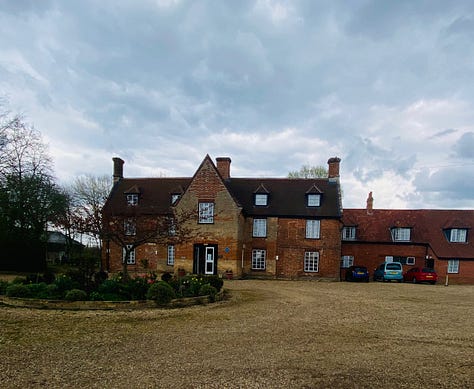



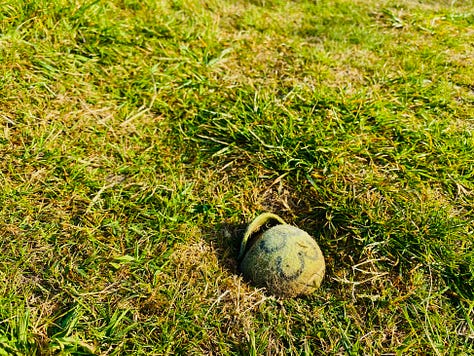
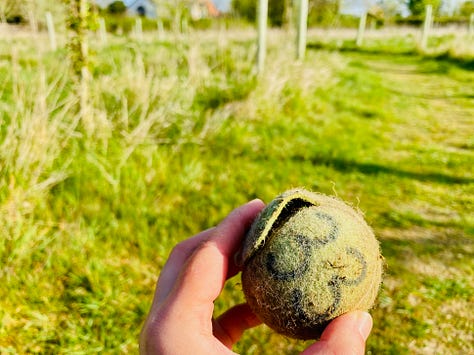
P.S. I found a treasure walking in the Vipassana centre on my last day. Perhaps because I had been meditating for 120+ hours in the past ten days, I became more aware of my surroundings. That is when I noticed a broken tennis ball hidden under the grass. When I dug it out, it had my lucky number on the back, which was also my age, 33!


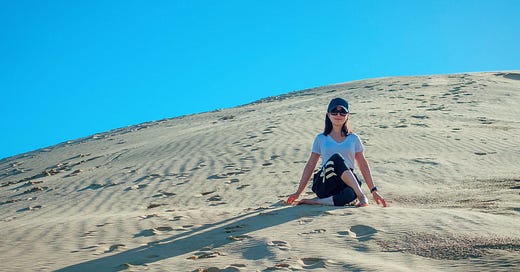


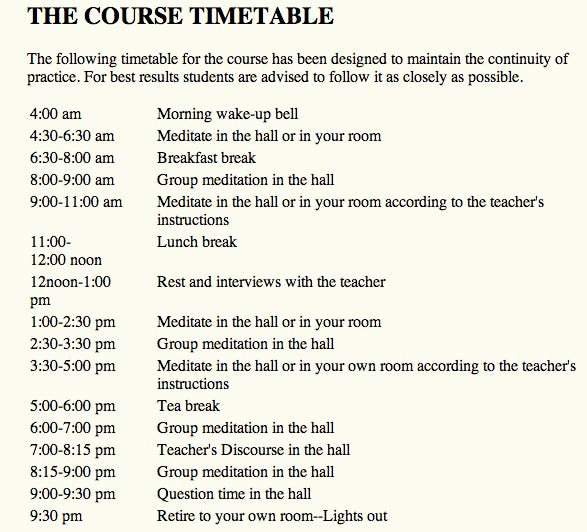
Definitely fond memories of Vipassana courses too.